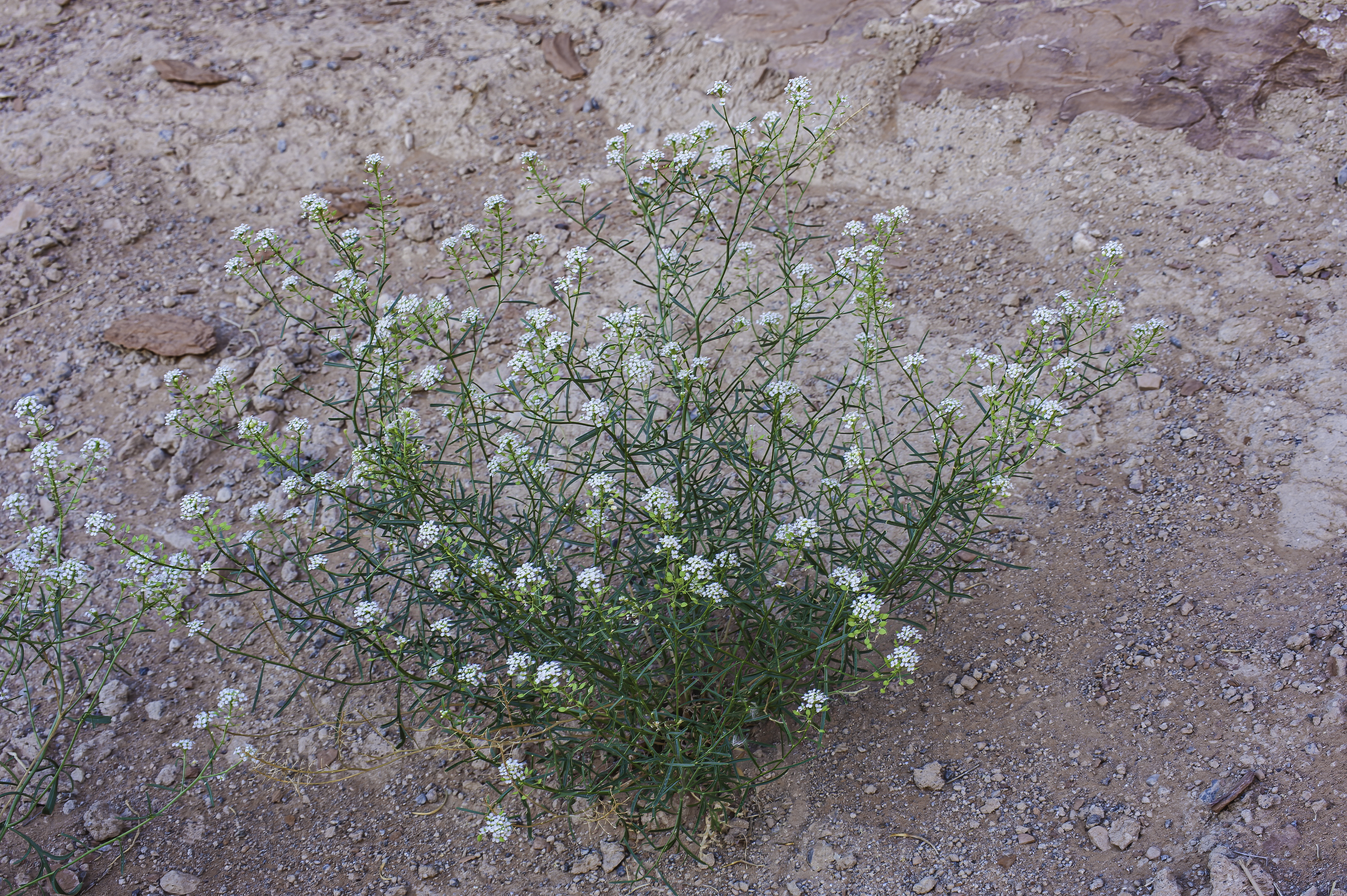Mountain pepperweed
(Lepidium montanum)

Description
Lepidium montanum is a species of flowering plant in the mustard family known by the common names mountain pepperweed, mountain peppergrass, mountain pepperwort, and mountain pepperplant. It is native to western North America from Oregon to Montana to northern Mexico, where it can be found in a number of habitats, often on salty or gravelly soils. There are several varieties, many of which are difficult to distinguish. This is a short, spreading, shrublike biennial herb producing a rounded form up to about 40 centimeters tall and greater in width. The leaves near the base of the plant are up to 15 centimeters long and are divided into several toothed lobes; those further up on the stem are shorter and often undivided. The plant flowers abundantly in rounded to cylindrical inflorescences a few centimeters wide. Each small flower has white to cream-colored petals about 2 millimeters long and two to six stamens. The fruit is an oval-shaped capsule a few millimeters long. Lepidium is a genus of plants in the mustard/cabbage family, Brassicaceae. The genus is widely distributed in the Americas, Africa, Asia, Europe, and Australia. It includes familiar species such as garden cress, maca, and dittander. General common names include peppercress, peppergrass, pepperweed, and pepperwort. Some species form tumbleweeds. The genus name Lepidium is a Greek word meaning 'small scale', which is thought to be derived from a folk medicine usage of the plant to treat leprosy, which cause small scales on the skin. Another meaning is related to the small scale-like fruit. There are about 175 to 220 species in the genus. 10 species are found in California.
Taxonomic tree:







